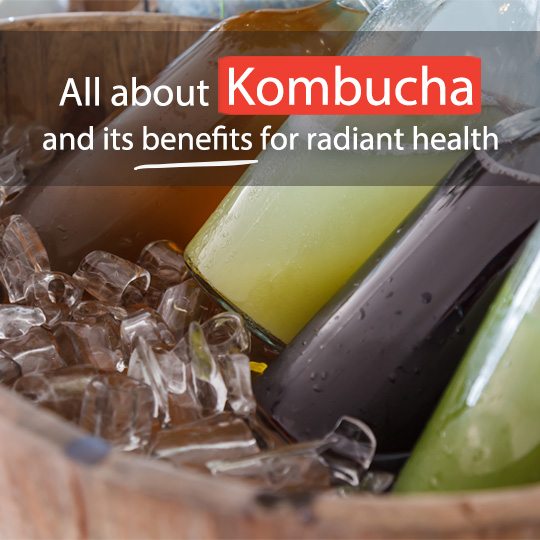Ever heard of Kombucha? Also known as “Immortal Health Elixir” this beverage’s popularity has been steadily increasing over the past couple of years. But kombucha can hardly be considered the new kid on the block, since it’s been reportedly around for more than 2,000 years.
And with a wide array of purported health benefits, ranging from improved digestion and reduced joint pain all the way to a stronger immune system, improved energy and reduced risk of developing cancer; this beverage might be something to get acquainted with. Read on to get the down-low on what it is, what it can do for you and how you can get your hands on some!
What Is It?
Although kombucha is also often referred to as “mushroom tea”, mushrooms are definitely not on its list of ingredients. Practically speaking, kombucha is a sweetened tea that is fermented with a symbiotic colony of bacteria and yeast (often referred to by it’s acronym; SCOBY). These friendly bacteria and yeast party together during fermentation, producing a blobby disc which resembles a mushroom, hence the not so flattering nickname. The fermentation process yields a nutrient-rich, low-sugar beverage that fans describe as a great alternative to soda.
The first known-of scientific research on this beverage was produced back in the first half of the 20th century, and started due to Russian scientists suspecting that the drink (known in Russia as tea kvass) may have been part of the reason why entire regions of the spectacularly large country had very low rates of cancers compared with others. They began a series of experiments and began pinpointing to what exactly it is that’s so beneficial about kombucha.
It took until around the 1990s for kombucha to reach the west, and, it’s been taking North-America by storm ever since. So far, not much research is available but thanks to its rising popularity over the last decades, more papers are slowly starting to emerge. And, while the evidence on kombucha itself is sparse, research is far from lacking on the individual nutrients it contains.
What Nutrients Does Kombucha Actually Contain?
The main nutrients you’ll find in this fermented beverage are:
Vitamins:
- vitamin B1
- vitamin B6
- vitamin B12
- vitamin C
Essential elements:
- zinc
- copper
- iron
- manganese
- nickel
Kombucha is also high in probiotics, antioxidants and glutaric acids.

Why Should I Care About Kombucha?
Kombucha is far more than just a trendy drink. It’s been associated with beneficial effects on a wide array of health-related aspects.
What’s more, at only 60 calories per 16 oz bottle, kombucha contains is a much healthier alternative to soft drinks. That’s because over 90% of its sugar content is used up by the fermentation process (similarly to what happens with sourdough bread or kefir).
A Little More About Kombucha’s Health Benefits
Digestion And Gut Health
Let’s start with the most obvious. Since kombucha is naturally fermented with a living colony of bacteria and yeast, it is considered a probiotic. And, as you should know, probiotics play a beneficial role on many aspects of health, including on digestion, gut health immunity but also mental clarity and mood stability. There’s not much not to love about these little beasts.
An article published in the Journal of Food Microbiology established that the following probiotic strains can be found in kombucha (in decreasing order):
- Zygosaccharomyces
- Gluconacetobacter
- Lactobacillus
- Acetobacter
Research in mice has found kombucha to be as effective as omeprazole (a drug commonly prescribed for heartburn, gastric-reflux and ulcers) in healing ulcers.
What’s more, kombucha was found to have a strong anti-microbial function, especially against E.coli, B. cereus, S. tiphimurium and candida bacterial strains.
The first three microorganisms are responsible for diarrheal disease, food-borne illness, and gastroenteritis, all of which have the unpleasant tendency to eject you food back out in one form or another.
Candida is a fungus that can cause candidiasis (also known as thrush), which commonly includes growth of white patches on the tongue or other areas of the mouth and throat. In women, candida can also cause yeast infections.
[color-box color=”main”]The bottom line: Kombucha may be particularly effective in fighting off bacterial infections as well as preventing and healing stomach ulcers. What’s more, it’s probiotic content can help improve a wide array of aspects related to health. Click here to read more about them.[/color-box]
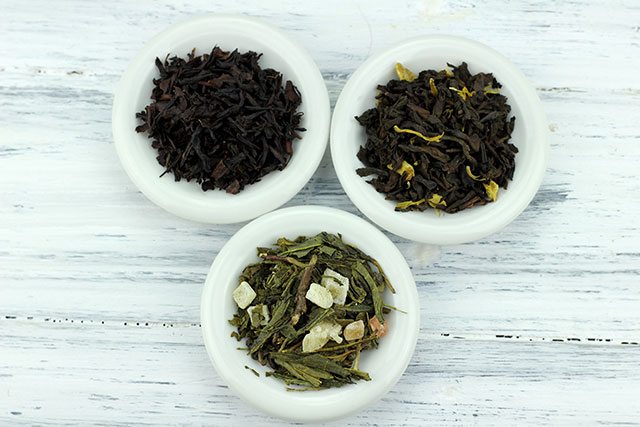
Fights Free-Radical Damage
Since the main component of kombucha is tea, its high antioxidant content may not come as a surprise to most. Antioxidants are good little soldiers to have on your side, as they help you fight a good fight against damage-causing molecules known as free-radicals, helping ward off many different diseases. Check out this article for more antioxidant-rich foods!
What you may not know is that kombucha contains an additional powerful antioxidant not found in tea alone. It’s known as D-saccharic acid 1, 4-lactone (or DSL for short). DSL seems to be produced through the fermentation process and scientists believe that it is this particular antioxidant (combined with a good dose of vitamin C also found in the beverage) that give it it’s antioxidant effects.
Plus, since it’s fermented, kombucha is more powerful than plain tea. It’s antioxidant activity has been found to be 100 times higher than vitamin C and 25 times higher than vitamin E.
Direct research on the effects of kombucha’s antioxidant properties found kombucha was able to reduce the damage caused by radiation exposure in mice. Now we’re just waiting for future research to confirm the same in humans.
[color-box color=”main”]The bottom line: Although few direct research of the effects of kombucha on humans exist, there is strong indication of it’s beneficial effects simply due to it’s antioxidant content and the sheer amount of research on the beneficial effects of antioxidants. Read more about the beneficial effects of antioxidants here.[/color-box]

Joint Pain
As mentioned a little earlier, kombucha contains a good amount of glutaric acid. Our bodies can convert this glutaric acid into glucosamine, which helps lubricate joints and maintain a good supply of collagen, thereby reducing and perhaps even preventing joint pain.
As a little side-note, collagen is not only found in the joints, but also throughout other parts of the body, including the biggest organ; your skin. So, through supporting collagen maintenance, kombucha may also indirectly help reduce the appearance of wrinkles. How about that for a win-win situation!
[color-box color=”main”]The bottom line: Give it a try, at the very least, it’s lubricate your joints, at the very best, it might reduce some of those crow’s feet![/color-box]
Liver Function
Kombucha may also have a protective effect when it comes to the liver (at least in mice, that is). Various studies have tested kombucha against compounds known cause injury to the liver such as paracetamol (Tylenol), carbon tetra-chloride, aflatoxin B1, cadmium chloride and TBHP. Each found kombucha to effectively prevent the negative effects caused by these liver toxicants.
Even more interestingly, at times, indicators of liver function in rats injected with kombucha were even reported to be similar to those of perfectly healthy control rats.
[color-box color=”main”]The bottom line: Kombucha may exert positive effects on your liver. The research is promising, but more, particularly on human subjects, is needed before making strong conclusions.[/color-box]

Energy
Many proponents of kombucha swear feeling invigorated and more energized once starting to regularly drink it. Of course, a placebo effect may be at play here. But, two other credible reasons may be at play.
First, kombucha’s energizing effect may be credited to it’s iron content. Normally, tannins found in tea inhibit absorption of iron from foods. Vitamin C, on the other hand, is known to increase absorption of iron. Contrary to regular teas, in fermented teas, decreased tannins and increased vitamin C concentrations are significantly useful for increased iron absorption.
Higher iron levels contribute to higher blood hemoglobin levels and, the more hemoglobin you have, the better you can supply oxygen to your cells. Simply, more oxygen = more energy (incidentally, this can also make running those 2 miles on the weekend seem much easier). What’s more, iron is also a required component to produce energy at the cellular level. So, through contributing to increased iron levels, kombucha can help your body create more energy, keeping you energized.
Second, let’s not forget that the main ingredient remains tea, which, although containing less than coffee, remains a source of caffeine. Caffeine being the stimulant it is, it can easily explain why some get a kick out of their regular kombucha fix.
[color-box color=”main”]The bottom line: Kombucha’s high iron combined with its caffeine content may, indeed, provide you with an energy boost![/color-box]
Cancer Prevention
Avid drinkers have been claiming kombucha to have anticancer properties for years. Their claims started being supported by scientific evidence back in 1951 through a population study conducted in Russia by the “Central Oncological Research Unit” and the “Russian Academy of Sciences in Moscow.” Interestingly, the Russians might’ve actually been onto something.
About 40 years later, a study published in Cancer Letters reported that consuming glucaric acid reduced the risk of cancer in humans.
A more recent cell study revealed that kombucha was able to significantly decrease the survival rate of prostate cancer cells.
Most researchers agree that the protective properties of kombucha are very likely due to its content of tea polyphenols.
There sure is tons of anecdotal evidence to support this, with the most cited example being that of president Reagan who reportedly consumed kombucha daily as part of his regimen to battle stomach cancer. It may have served him well, as he passed away many years after his initial diagnosis, of non-cancer related causes.
[color-box color=”main”]The bottom line: Of course, more studies are needed, but, for now, most researchers agree that the protective properties of kombucha are very likely due to its content of tea polyphenols.[/color-box]

Diabetes
Research dating as far back as 1929 can be found reporting on kombucha’s blood sugar lowering effects, with animal studies demonstrating that kombucha can significantly reduces blood sugar levels in rats.
More recent animal studies report similarly positive effects of kombucha including the ability to reverse pancreatic cell death of diabetic rodents to a a state comparable to that of healthy control rodents in addition to lowering their blood sugar levels. In the diabetes world, those are pretty interesting results.
Of course, studies in humans are needed before considering kombucha in the prevention or treatment of diabetes, but these early study results could be promising.
[color-box color=”main”]The bottom line: It seems kombucha may help lower blood sugar levels but don’t ditch your diabetic diets (and medications) just yet, as more research in humans is needed before any strong conclusions can be made.[/color-box]
Cholesterol
Kombucha may help clean-up your arteries! In a clinical trial involving 52 patients with high cholesterol, kombucha was reportedly found to have the ability to lower levels back to normal.
What’s more, animal studies involving mice describe kombucha’s ability to reduce bad (a.k.a. LDL) cholesterol levels while simultaneously raising good (a.k.a. HDL) cholesterol levels after just 10 days. There results were reproduced in duck but not yet in humans.
[color-box color=”main”]The bottom line: Again, these are pretty promising studies, especially as they point to lowering effects on bad cholesterol combined with increasing effects on good cholesterol (which helps protect against the bad). But don’t celebrate just yet, as more research is needed to confirm these findings in humans.[/color-box]
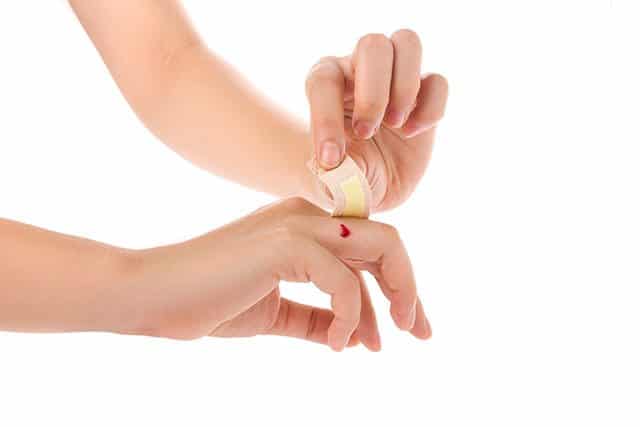
Wound healing
Research on animal models showed that topical application of kombucha once a day for five days sped up the healing process following a wound that involved both skin and muscle when compared to no kombucha.
What’s more, no differences in healing process was found between kombucha and a commercial healing product (containing antibiotics, anti-inflammatory agents and vitamins).
[color-box color=”main”]The bottom line: Give this a try at home by rubbing a little kombucha on your wounds. It sure can’t hurt![/color-box]
Oral health
Mouth rinsing with kombucha tea may help prevent caries. It seems that this beverage has a reducing effect on the number of harmful bacteria in the mouth, which are responsible for producing acid capable of demineralizing tooth enamel and responsible for caries.
This foreign study compared two groups of 13 people, one which rinsed with sterile distilled water whereas the other rinsed with a 10-day fermented kombucha tea. Study results showed that the number of bacterial colonies in the amount decreased after rinsing with kombucha compared to distilled water. What’s more, there was an increase in pH of the saliva after rinsing with kombucha.
[color-box color=”main”]The bottom line: As promising as these results sound, don’t forget to rinse your mouth with plain water afterwards, as kombucha’s high acidity may, according to some, also contribute to tooth enamel erosion (more on this later).[/color-box]
How Can I Get My Hands On Some?
Since gaining in popularity, Kombucha can be found in many groceries and health stores all throughout North-America. If you chose to buy it, look for an organic variety and scan the label to ensure it doesn’t contain a large amount of sugar.
However, at 3-4$ a bottle, it can get pricey pretty fast. So if you’re feeling a little adventurous, it might be worth mentioning that kombucha can be also made at home for a fraction of the cost.
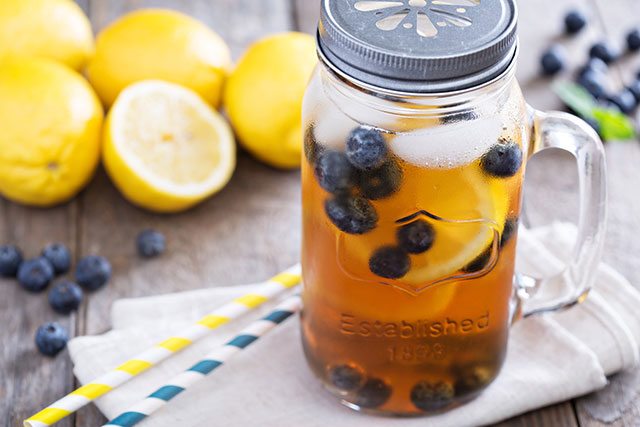
How to make it at home
Ready to take the leap and attempt making your own homemade version? All you’ll need is some tea, sugar, a mother SCOBY, some juice and a couple of jars. Follow this step-by-step guide and you’ll be sipping on the fermented beverage in about two week’s time!
But before getting started, here are some important notes:
- You’ll need a symbiotic colony of bacteria and yeast (SCOBY). This can be easily ordered on the internet. Once your SCOBY has arrived, you’ve got 7-10 days to get started. Let your SCOBY sit in the refrigerator for any longer and it will likely become stale, producing a less than fresh or healthful end-product.
- Each kombucha SCOBY comes with at least 1/2 cup liquid with it. Do not throw this liquid down the drain! It will be needed to make your first batch of tea.
- The length of the fermentation process will vary depending on the ambient temperature. Fermentation generally takes about 7-12 days (based on moderate temperatures) but be aware that this time may increase in winter and decrease in summer or vary based on where you live. You’ll know when it’s time to bottle your kombucha tea with fruit juice by tasting it. It should be mostly tart and only mildly sweet.
- One last little warning. Just like everyone swears by their spaghetti sauce recipe, fawning over their “family method” that make their version the ultimate best, the story is no different when it comes to kombucha. Everyone makes it a tad bit differently, and each will give you advice on how to make the best, most healthful version. What I’m trying to say is not to worry too much about it. As long as you generally follow the instruction, there’s room to color outside of the lines. Enjoy the process and find out what works best for you!
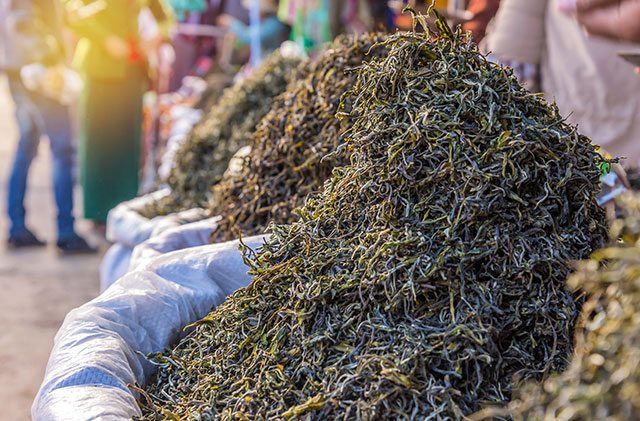
What You’ll Need
- 2 gallons of sweetened tea
- 2 kombucha mothers (a.k.a. “SCOBYs” or “mushrooms”)
- 2 large (wide-mouthed) 1 gallon glass jars
- 1 thin kitchen towel
- 15 oz fruit juice
- 6 quart sized jars with lids – each bottle will be filled up to 75-80% of the way
Step 1:
Make sweetened tea
- Boil 2 gallons of fresh, filtered water. Remove from heat and add tea bags of your choice. You can use whichever tea you want; black, green or white, expensive or not. Steep for 5 minutes.
- Remove the tea bags and stir in 2 cups of sugar, until well dissolved. This sugar will be the feast for the yeast! Set the sweetened tea aside to cool to room temperature (this should take about 2 hours).
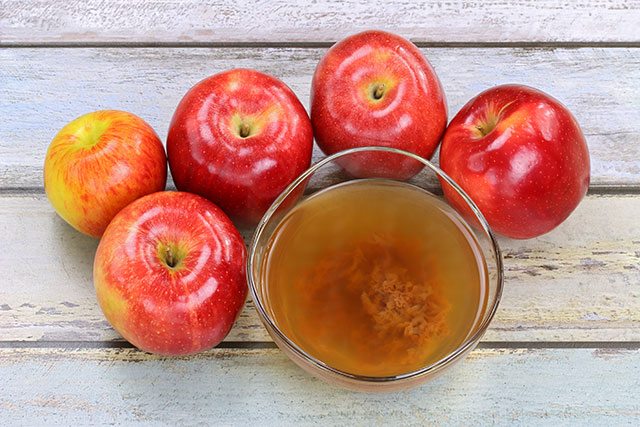
Step 2:
- Once the tea has cooled, transfer it to the 2 large (wide-mouthed) glass jars. It’s important you chose glass as kombucha tea doesn’t brew well in metal or plastic containers and use of ceramic jars raises the risk of lead poisoning. Now, add the half cup of liquid that came with the SCOBY to your glass jars.
- Here comes the tricky part; placing the SCOBY on top of the tea mixture. For those of you that have never touched one, expect something between the consistency of jell-o and flan. Patience is key here, as handling the SCOBY may, at first, take a little getting used to.
- Once you’re done, cover your glass containers with clean kitchen towels, securing with an elastic band around the mouth. The kombucha needs oxygen to ferment, so using a towel rather than a lid will allow it to do just that while still keeping insects and other contaminants out. Store away from direct sunlight and let ferment for 7-12 days. On the morning of the 7th day (or 8th, or 9th…depending on the results of the “taste-test” described earlier), remove the SCOBY and set it aside on a plate, pouring back about half a cup of fermented tea mixture over it to keep it moist. Store the SCOBY -liquid mixture back in the refrigerator. You’ll be able to reuse it for future batches.
N.B. Every other batch or so, separate the old SCOBY (also called the mother) from it’s baby (the SCOBY which has grown on top of the old SCOBY). The baby will become the mother for your next batch of kombucha tea, while the mother can be discarded or given to a friend who’d like to give making their own kombucha a try.
Step 3:
- It’s now time to ferment the tea with fruit juice. Pour (pulp-less) fruit juice into the smaller glass jars or bottles you’ll be using to bottle your kombucha. Aim for about 2.5oz per quart-sized jar and adjust the quantity proportionally for different-sized bottles. Pour kombucha tea on top of the fruit juice up to ± 75-80% of the bottle’s capacity. Be sure to reserve at least a quarter of your brewed kombucha to use with your saved SCOBY in your next batch.
- Place bottles in a dark, dry place to ferment for 48 hours, then chill in the refrigerator completely before opening.
- Once opened, remove the thin film that accumulated on top during the juice fermentation phase. Oh, and try not shake as the contents should be bubbly!

- Of note, some experts warn about the dangers of home-brewing and unpasteurized kombucha, especially if produced in non-sterile conditions as it increases the risk of unfriendly bacteria finding their way into the tea. One such bacteria, asperigillus, is a toxin-producing fungus that can appear when the acidity levels in home-brewed kombucha are too low. ConsumerLab.com (an independent 3rd party company that tests a wide range of health and nutrition products) mentions several case reports, which suggest that kombucha preparations can cause such problems as nausea, jaundice, shortness of breath, throat tightness, headache, dizziness, liver inflammation, and even unconsciousness. The FDA cautions that home-brewed versions are at high risk of contamination, so be especially wary of this if you have a compromised immune system, for example due to viruses like HIV/AIDS. Commercially-produced kombucha should be safer, but many of its probiotic properties will be lost through the pasteurization process.
- Although kombucha may help decrease caries, it’s high natural acidity could, at the same time, be harmful to the enamel of your teeth. To minimize these effects, aim to drink your kombucha all in one sitting instead of sipping on it throughout the day and swish your mouth with clean water afterwards.
- Due to it’s main ingredient, kombucha does contain some caffeine, and thanks to it’s fermentation process, it may also contain varying levels of alcohol, especially if home-brewed. Pregnant women and individuals particularly sensitive to caffeine or alcohol are advised to err on the safe side by either avoiding kombucha or consuming it in small quantities.
As you can see, kombucha may provide you with a variety of advantages when it comes to health and well-being. If you’re already an avid fan and would like to contribute to the points mentioned in this article, please do so through the comment section below!
I’d also be curious to read about which other nutrition topics you’d like to read more about. So let me know in the comments below!



